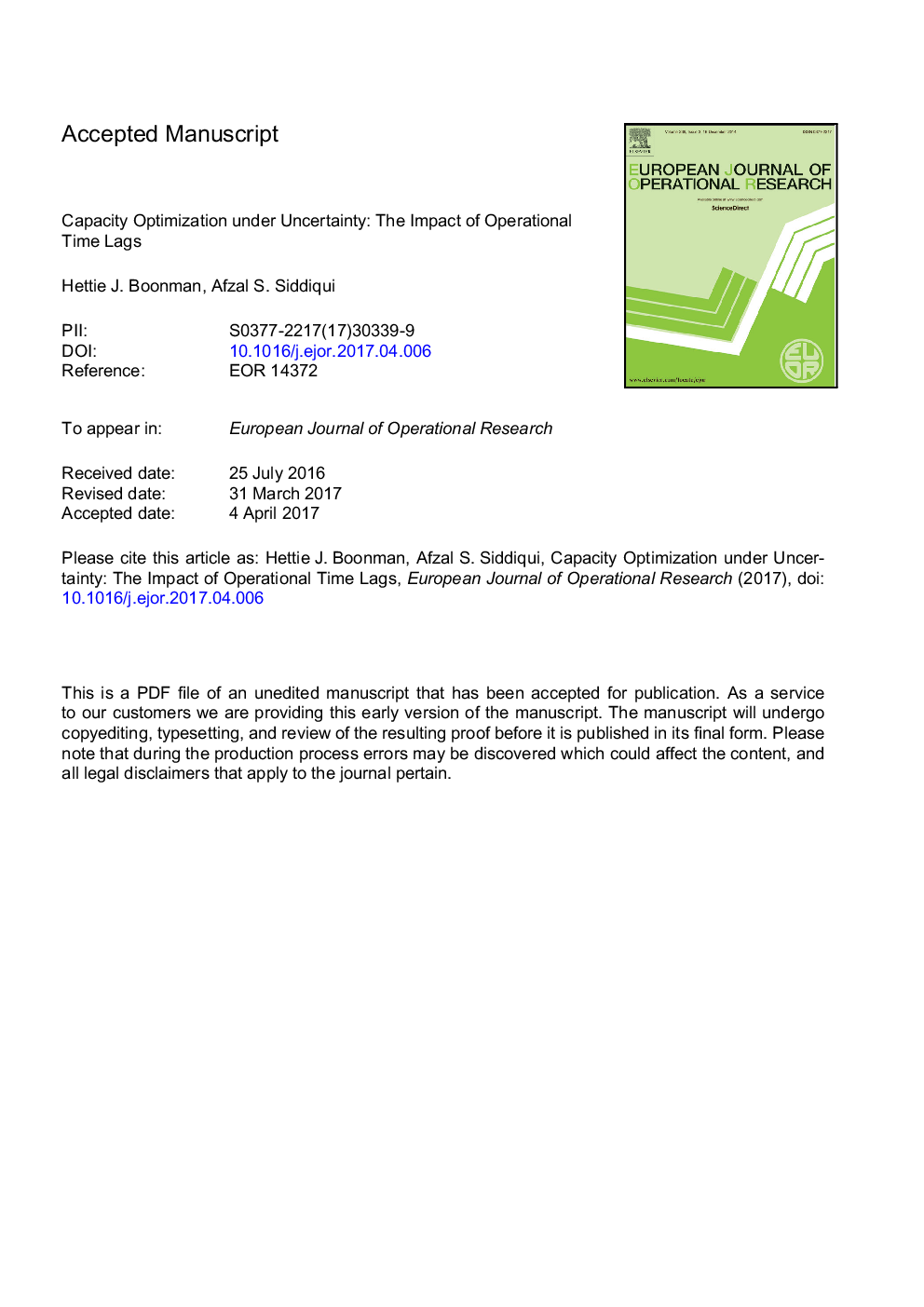| Article ID | Journal | Published Year | Pages | File Type |
|---|---|---|---|---|
| 4959519 | European Journal of Operational Research | 2017 | 33 Pages |
Abstract
Time lags in switching operational modes are typical in the manufacturing and power sectors but are not treated in most real options models. In this paper, we consider a firm that has the opportunity to suspend and to resume production infinitely many times subject to a time lag after each startup decision. We contribute to the literature by allowing the firm to determine its level of installed capacity in conjunction with its optimal investment timing. We find that an increase in the length of the time lag results in an increase in the optimal capacity level. Capacity optimization also interacts with the length of the time lag to affect investment timing and the triggers to suspend and resume production, thereby weakening the result about hysteresis from a standard real options model. Under the assumption of a fixed level of capacity, a longer lag speeds up the decision to resume operations due to a positive upside to the revenue but delays the suspension of operations. By contrast, with capacity optimization, a longer time lag results in a larger capacity choice, which can indirectly delay the investment decision and the timing to resume operations. This indirect effect dominates when the level of market uncertainty is low and the time lag is initially small.
Related Topics
Physical Sciences and Engineering
Computer Science
Computer Science (General)
Authors
Hettie J. Boonman, Afzal S. Siddiqui,
